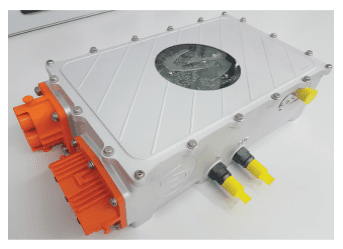Welcome to Sino Bearings web
24x7 HOTLINE:+86-28-81454188

 NEWS
NEWS
A key component for electrified, fuel-efficient aircraft is motor control technology to increase efficiency and decrease dependency on carbon-based fuels.
Drive System Design (DSD), a company specializing in the rapid engineering and development of electrified propulsion systems and associated technologies, is demonstrating a new solution that places these capabilities within reach. The company’s open platform inverter enables quick and efficient development of motor control systems from initial concept to first prototype. Users gain access to every aspect of the inverter, including the hardware, drivers, and software.
The inverter solution also features reliable and customizable hardware paired with a flexible, modular plug-and-play software for aerospace, automotive, commercial vehicle, defense, and marine industries.
“We’ve found that aerospace has picked up the baton from automotive in pushing motor speeds and getting power density in this way. Defense is the big catalyst for many power distribution and generation considerations,” says Ben Chiswick, DSD’s director of engineering and business development.
Chiswick explains the inverter initially was developed to support and lower the risk of prototype motor testing. While it was in development, the company realized it would be a good enabler for a broader range of customers. As more companies approached DSD to engage in electronics design and development projects, they realized they had a good building block to support other industries, such as aerospace and defense. The inverter’s DNA can be designed to meet customers’ specific needs and is woven through their products.
“We’re having conversations with electric vertical take-off and landing (eVTOL) companies, often startups or conventional take-off and landing (CTOL) for ground testing,” Chiswick says. “We can get them through their initial tests. There’s no flight certification needed and it’s helping get people up and running.”
Essential abilities
“As we see the emergence of not only strong market players in eVTOL and eCTOL, the next step is electrified propulsion on a larger scale for aerospace, with higher altitude requirements driving a lot of the certification difficulties that must be faced,” Chiswick explains.
While the team designs the open platform inverter to be a speed enabler and risk mitigator, its core is used to support customers with their own inverter development efforts.
The inverter also plays a critical role in meeting efficiency and mass requirements for aircraft. In development, the two important factors to consider are the core inverter technology being used [insulated-gate bipolar transistor (IGBT) power module or silicon carbide] and the inverter’s role in the complete system’s thermal management. The core inverter technology drives improved efficiency – enabling higher motor speeds and power densities. For relatively low motor speeds near 12,000rpm, IGBT technology is perfectly suitable. However, going at faster rates (20,000rpm and possibly 30,000rpm) the switching frequencies get so high that IGBT just dissipates heat.
“We won’t see IGBT in aerospace propulsion for very long as with higher switching frequencies needed to support higher motor speeds, the power losses can be significant. Silicon carbide will become more common, and we can expect aerospace to increase rpm rates and be a driving force behind developments such as gallium nitride semiconductors.”
Thermal management of the inverter and overall system is key to reducing mass. If inverter losses are lower, a smaller, lighter thermal management system can be used.
Another area that DSD focuses on is reducing the number of fluid circuits in the electrified propulsion system. More users turning to oil cooling for their motors has allowed DSD to push development of fluid management tools to refine existing smoothed particle hydrodynamic (SPH) techniques. They can model where oil splash is going, which ensures they are getting to all the bearings. It also eliminates the need for a water refill glycol system.
Sharing fluids with existing systems offers advantages for reduced system complexity, fewer components, and eliminates the need for further fluid systems being carried on the aircraft. This improves mass and failure mechanisms and could ease certification processes, letting startups bring products to market faster.
Demand for on-board power generators
As the future unveils more electric and fuel-cell powered aircraft, inverter demand will increase and play a considerable role powering critical on-board electric systems. DSD is evolving their traction inverter capability into on-board power generation and off-board power distribution systems, such as low voltage AC output inverters and DC-DC converters. Chiswick believes that to develop these systems further and increase power capabilities, the industry needs a more flexible approach. The chip shortage may force designers to be more open minded in their choice of chips or power boards. Chiswick says DSD is finding that many people have fully grasped the low voltage side of power electronics, and many suppliers offer low voltage DC converters and lower voltage AC inverters for power takeoffs for ancillary drives, which are common in defense and aerospace.
What eVTOL designers don't have is the complex knowledge that goes behind the motor inverter, which is what DSD’s open platform inverter is designed to enable.
“There are two distinct supply chains, two distinct systems right now, as everything moves toward being more closely integrated as a complete electrified propulsion system, a complete electrification network. There’ll be that crossover we must meet in the middle. This is key, as I think overall demand for those systems is only going to increase because electrification is here to stay and is continuously growing,” Chiswick concludes.